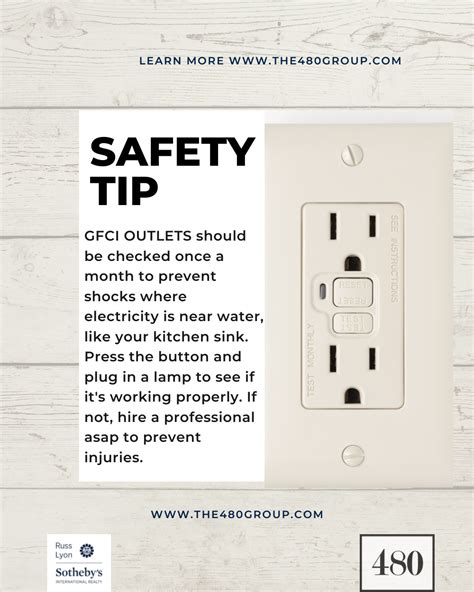GFCI Outlet: A Quick Safety Check
Ground Fault Circuit Interrupter (GFCI) outlets are vital safety devices that protect against electrical shocks. These life-saving outlets are commonly found in kitchens, bathrooms, garages, and outdoor areas – anywhere near water or moisture. But how do you know if your GFCI outlets are working correctly? Regular testing is crucial, and this guide provides a quick and easy way to ensure your family's safety.
What is a GFCI Outlet?
Before diving into testing, let's briefly revisit what a GFCI outlet does. Unlike standard outlets, GFCI outlets monitor the electrical current flowing through them. If there's an imbalance – indicating a ground fault, such as a leak to ground (e.g., someone touching a live wire) – the GFCI instantly cuts off the power, preventing serious injury or even death. This rapid response is what makes them so important in high-risk areas.
How to Test a GFCI Outlet: A Step-by-Step Guide
Testing your GFCI outlets is a simple process that takes only a few seconds. Here's how:
-
Locate the Test and Reset Buttons: GFCI outlets have two buttons clearly labeled "TEST" and "RESET."
-
Plug in a Device (Optional): While not strictly necessary, plugging in a small appliance (like a lamp) can provide visual confirmation of the power interruption.
-
Press the "TEST" Button: Firmly press the "TEST" button. If the GFCI is working correctly, the outlet will immediately cut power. You'll know this because your plugged-in device will turn off (if you used one) and the outlet will be dead.
-
Press the "RESET" Button: After confirming the power is off, press the "RESET" button. If the outlet is functioning properly, power will be restored, and your plugged-in device (if any) will turn back on.
What if My GFCI Outlet Doesn't Trip During the Test?
If pressing the "TEST" button doesn't interrupt the power, your GFCI outlet is faulty and needs immediate replacement. A non-functioning GFCI offers no protection, leaving you vulnerable to electrical shocks. Don't attempt to repair a faulty GFCI yourself; always call a qualified electrician.
What if the "RESET" Button Won't Reset?
If the "RESET" button remains pushed in or won't reset the power after the test, it's another sign of a malfunction. This indicates a potential ground fault within the circuit, suggesting a problem that requires professional attention. Again, contact a licensed electrician to diagnose and fix the issue.
How Often Should I Test My GFCI Outlets?
While there's no hard and fast rule, it's recommended to test your GFCI outlets at least once a month. Regular testing ensures that these critical safety devices are functioning properly and ready to protect you and your family from electrical hazards. Consider incorporating this simple check into your monthly household maintenance routine.
Can I Test a GFCI Outlet with a Multimeter?
While a multimeter can provide more detailed electrical readings, it's not necessary for a basic safety check. The simple "TEST" and "RESET" button functionality is sufficient for determining if a GFCI outlet is working correctly for everyday protection. Using a multimeter improperly can be dangerous if you're not experienced in electrical work.
What are the Common Causes of GFCI Outlet Failure?
GFCI outlets, while robust, can fail due to several factors. These include:
- Age: Over time, internal components can degrade, leading to malfunction.
- Water Damage: Exposure to excessive moisture can damage internal circuitry.
- Power Surges: Sudden voltage spikes can overload and damage the outlet.
- Loose Wiring: Poorly installed or loose wiring connections can disrupt functionality.
By regularly performing this simple test, you're taking a crucial step towards ensuring the electrical safety of your home and protecting your loved ones from potential harm. Remember, a functioning GFCI outlet is a silent guardian, and regular testing is the key to keeping it vigilant.

